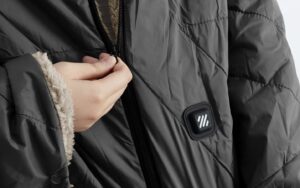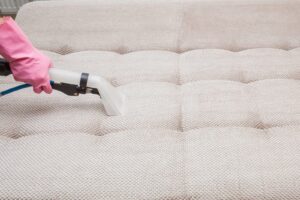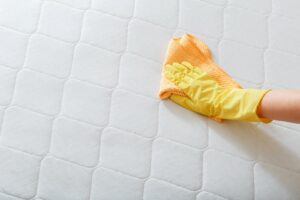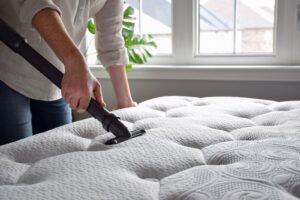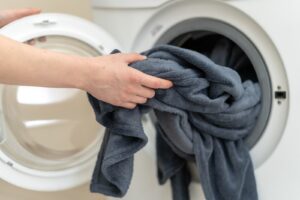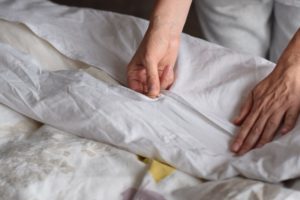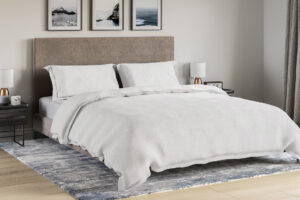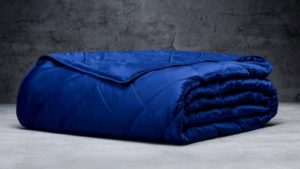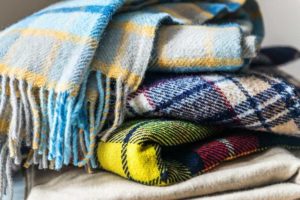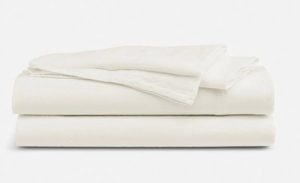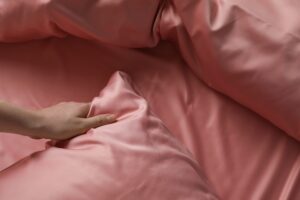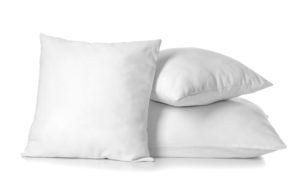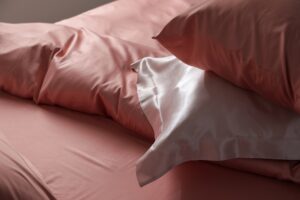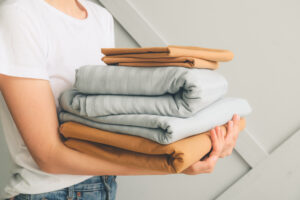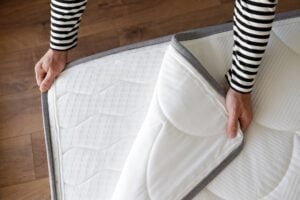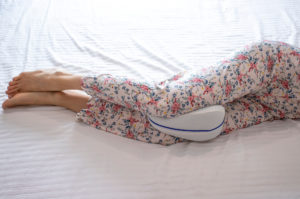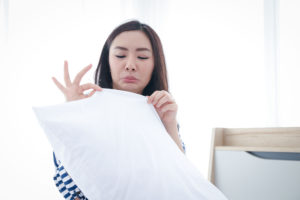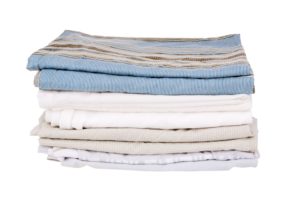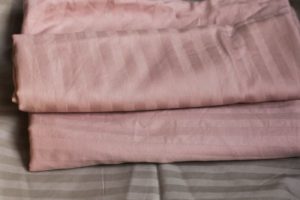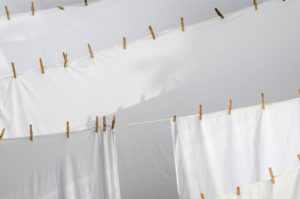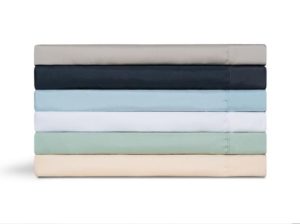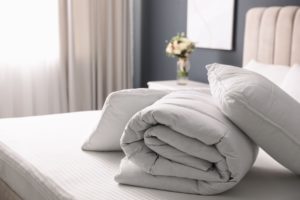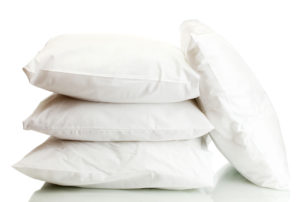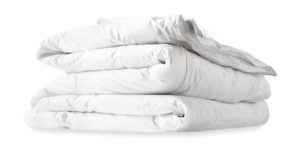How to Whiten Sheets
White sheets have a classic look that will complement any bedroom decor. However, keeping your bedding clean and pristine can be a challenge, especially after you’ve used the items for a year or longer.
White sheets and pillowcases gradually turn yellow over time as the fabric is exposed to body oil and sweat. Lotions and cosmetics can also alter the color to a noticeable degree. We’ll share some helpful tips for cleaning and whitening white bedding items.
Wash Bedding in Hot Water
The water in most modern washing machines can reach a temperature of 130 degrees Fahrenheit (54.4 degrees Celsius). This setting is recommended for sheets and pillowcases because the water is hot enough to kill dust mites and other allergens.
However, hot water can cause bedding items to shrink if they are made of cotton or other natural fibers, and the temperature can cause the material to wear out more quickly. Finding the right hot washer setting is essential for keeping these items fresh and hygienic without causing damage.
Use Baking Soda and Vinegar
Many rely on chlorine bleach to brighten their sheets, but there are actually more effective ways to keep your sheets looking white and fresh. One common method involves adding about half a cup of baking soda to your laundry detergent before each load. Baking soda strengthens the detergent and also helps control and eliminate odor.
White vinegar also has natural whitening capabilities and is an effective fabric softener. Try adding half a cup at the beginning of the wash cycle. Alternatively, you can soak the sheets and pillowcases in vinegar and warm water prior to placing them in your washing machine. In either case, the vinegar smell will wash out, leaving the items smelling fresh.
Use baking soda and white vinegar together for maximum whitening.

Try Lemon Juice
Like vinegar and baking soda, lemon juice has whitening and odor-controlling properties that make it very effective for cleaning sheets and pillowcases. Use one to two cups of lemon juice for the best results. Either pour the lemon juice directly in your washing machine at the beginning of the cycle or soak your linens overnight in hot water with half a cup of lemon juice.
Take Caution With Bleach
Chlorine bleach is an inexpensive option for whitening sheets and pillowcases, but it is not particularly effective. If the bedding items have traces of body oil on them, the chlorine may react with these substances and cause yellow stains to appear.
For best results, try first washing the items without bleach to clean away the oil, sweat, and other contaminants. If the sheets and pillowcases still need whitening, then you can clean them a second time using bleach.
A good alternative to bleach is borax, or sodium borate, a powder detergent used to pre-soak sheets and bedding items prior to washing in a machine. The borax won’t react with body oils and sweat like chlorine will, but its whitening ability is comparable to that of bleach.
Wash Regularly
Maintaining pristine white sheets and pillowcases is a balancing act. You want to clean these items regularly in order to keep them fresh, but washing them too frequently will lead to increased wear and tear as the materials break down.
We recommend washing your white sheets at least once per week. Purchasing multiple sheet sets will allow you to swap out sheets and pillowcases easily when laundry day arrives.
Line Dry Sheets
Rather than tumble drying your sheets and pillowcases in a machine, try letting them dry on a clothesline if possible. One to two hours under the open sun can whiten and freshen bedding items as well, if not more effectively, than a household dryer.
Make sure each sheet and pillowcase is securely fastened to the line to prevent it from falling or blowing away. Take down the items after a couple of hours to avoid sun and heat damage.
Additional Tips
In addition to the steps listed above, these suggestions can help you maintain fresh white sheets for years.
- No Eating in Bed: Food stains can be hard to clean out of white sheets, and spills can permanently damage your mattress.
- Wash Bedding With Other White Items: Even items with neutral shades and lighter hues can bleed their colors onto white bedding in the laundry, which in turn can permanently discolor your sheets and pillowcases.
- Get Into Bed Clean: A shower before bed can wash off body oil and perspiration, two leading causes of yellowing in white sheets. At the very least, wash your face before bed – especially if you use moisturizer, face cream, or cosmetics.
- Replace Sheets Every Week: Even the most durable bedding items need a break, so be sure to swap them out regularly to preserve their structure and minimize wear and tear.
- Retire Sheets as Needed: The average sheet set will need to be replaced after two to three years of regular use. In addition to yellowing, sheets and pillowcases often show their age through little balls of fluff, or pills, that appear on the surface of the fabric and make it feel uneven. Tears and rips are also common as bedding items near the end of their lifespan.

Still have questions? Ask our community!
Join our Sleep Care Community — a trusted hub of sleep health professionals, product specialists, and people just like you. Whether you need expert sleep advice for your insomnia or you’re searching for the perfect mattress, we’ve got you covered. Get personalized guidance from the experts who know sleep best.



